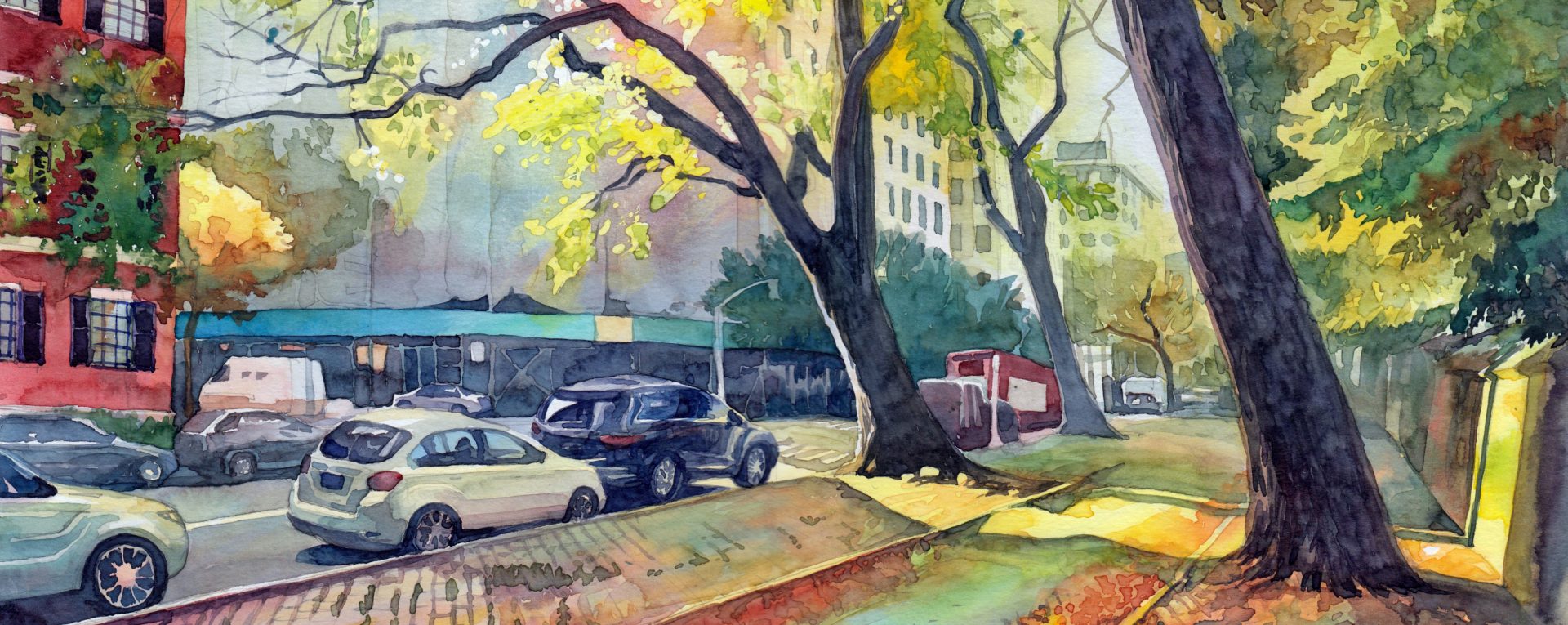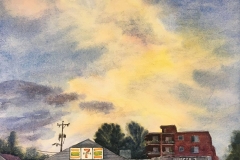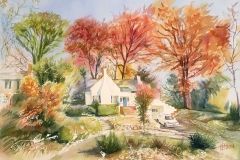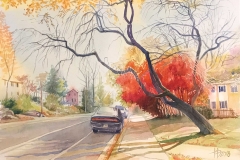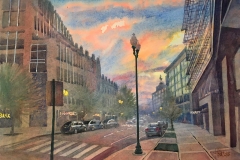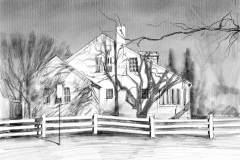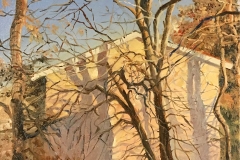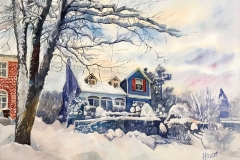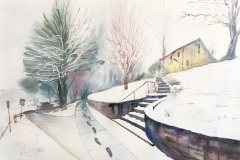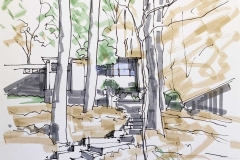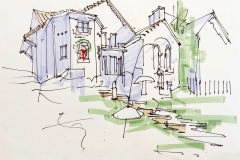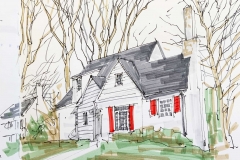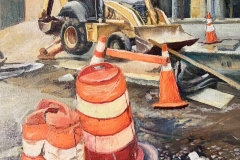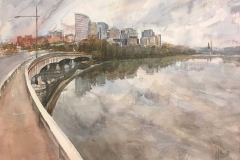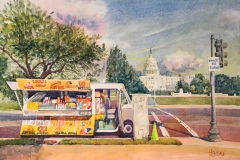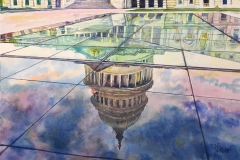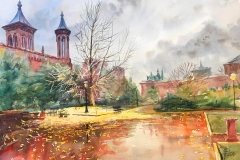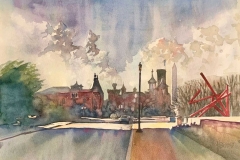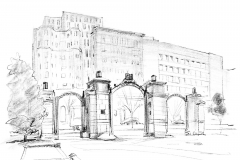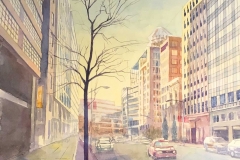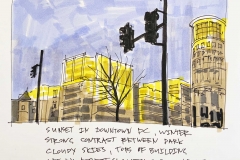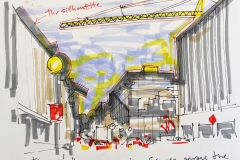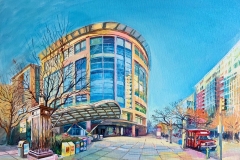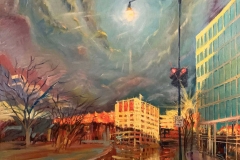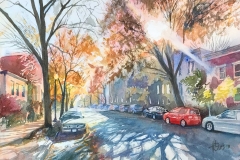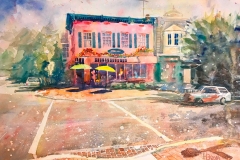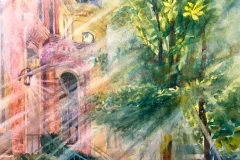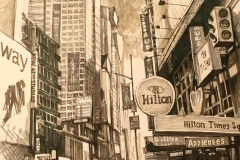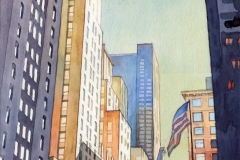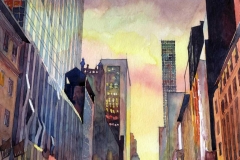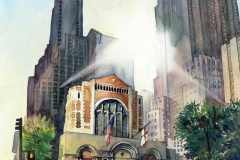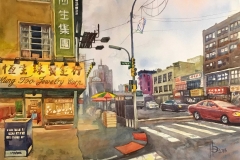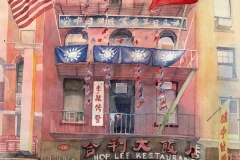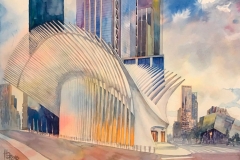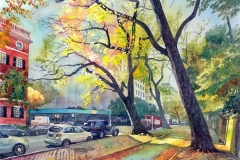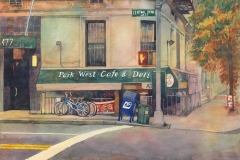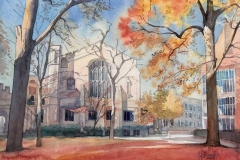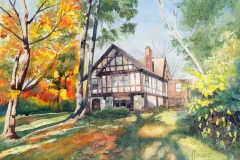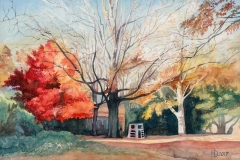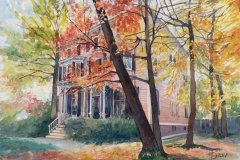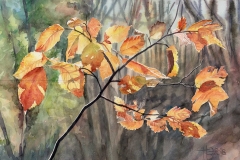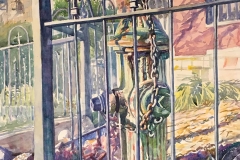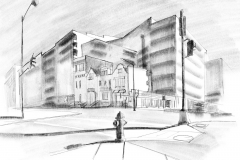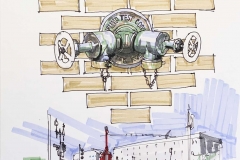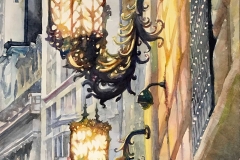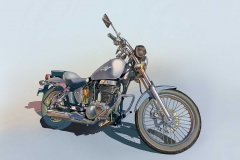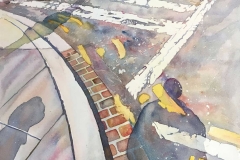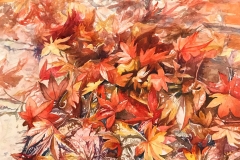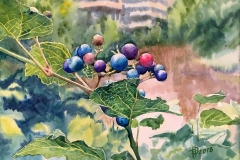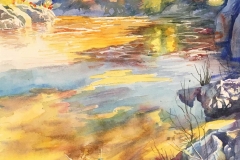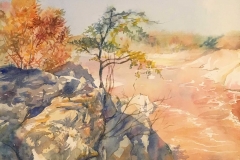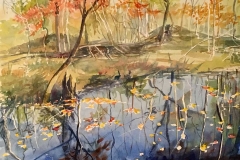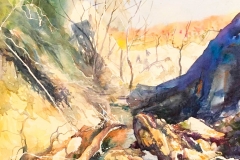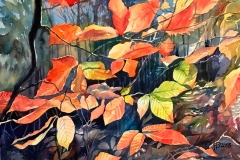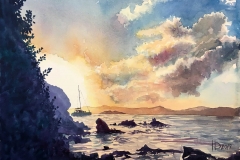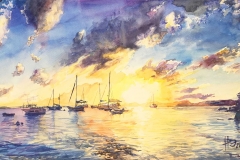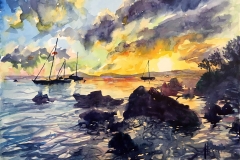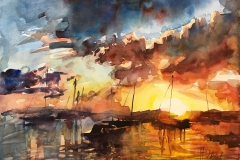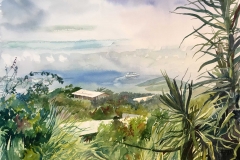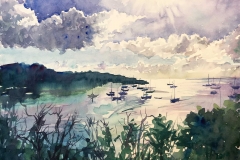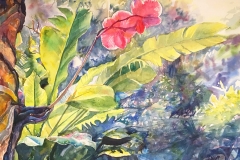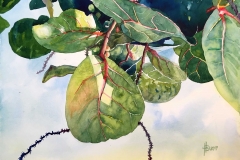– I always wanted to be an artist. When I was in high school, my dream was to be accepted to the Repin Academy in St. Petersburg or the Surikov Art College in Moscow. I went to the HBK art studio in my hometown, Osh, to prepare for the entrance exams.
Author
Emil Nasritdinov
Dr. Emil Nasritdinov is an Associate Professor in Anthropology at the American University of Central Asia, Kyrgyzstan. He holds a PhD in Urban Planning from the University of Melbourne, Australia. His main areas of research and teaching expertise are migration, religion and urban life. He is currently a Fulbright Visiting Scholar with the Institute for European, Russian, and Eurasian Studies (IERES), at the Elliot School of International Affairs, George Washington University. IERES has recently organized his personal art-exhibition, which will be up on the walls of the Institute until April 20th.
Background Story
My parents were very supportive of my interest in art, but not very fond of the idea of me pursuing an artistic career. We therefore settled on architecture as a compromise between art and computer engineering. I was admitted to the school of architecture in Bishkek and for three years I made plans to run away to Moscow or St. Petersburg in the summer. It never happened: I eventually grew to like what I was studying and in 1997 I graduated and started working as an architect.
I continued drawing on an irregular basis while working, and later while studying in graduate school. I was particularly good at drawing portraits, but I stopped doing this in 2002, when I became a practicing Muslim and learned that drawing people is discouraged in Islamic tradition. From then on, I became increasingly interested in drawing landscapes and urban scenes. One of my favorite subjects was Sydney Road in the Brunswick neighborhood of Melbourne, where we lived when I was doing my PhD at the University of Melbourne. Upon completing it in 2007, I was invited to teach anthropology at the American University of Central Asia and have been there ever since.
Academic life entails a lot of traveling, and over the past twelve years I have had the opportunity to see many new places and cities. While on my travels, whenever I had a chance, I would wander around and take photographs of interesting buildings, streets, piazzas… About four years ago, I began drawing and painting from these photographs. Inspiration often came in the colder season, beginning in November, and it helped me deal with the lack of sun and minor seasonal depression.
This academic year, I received a Fulbright scholarship to work on my book on labor migration from Kyrgyzstan to Russia at the Institute of European, Russian and Eurasian Studies, George Washington University, under the guidance of Marlene Laruelle. I have been spending most of my days working at the Gelman Library, but the absence of teaching obligations has freed up time in the evenings and on the weekends to paint.
Occidentalization Exercise
I have never been excited about abstract art and all of my paintings are quite figurative: I paint what I see and my style can be defined as either realism or impressionism. I choose scenes that have an interesting dynamic composition and colors that reflect the mood. As an outsider to America, I cannot relate to certain places in the same way as locals do; I must therefore rely on my visual impression and see shapes and colors where others see objects of everyday use.
Being from the East, I am quite fascinated by the West: by the size of trees, buildings, and roads; by the colors of skies, leaves, and facades; and by the variety of forms, scales, and silhouettes. This fascination is an important part of my Occidental experience, of my comprehension of the West. The comprehension is not entirely individual because my family (my wife and kids) are a very important part of it. We travel together and often go for walks together, we discuss what we see, we share the excitement and we point to things we notice. Very often, my family members suggest what I should paint; they also actively comment on the paintings themselves.
Another part of my Occidentalization exercise involves taking people out of paintings. As I mentioned earlier, there is religious reasoning behind that. Excluding people might not be unusual for landscape paintings, but it is very rare not to see people in paintings of busy urban places.
For example, can you imagine Times Square in New York in the daytime without people? Hardly! There is always a sea of visitors. Looking at Western cities without people reflects my Eastern Islamic vision; my paintings become a hybrid of classic European realism and the Islamic artistic tradition of excluding living creatures.
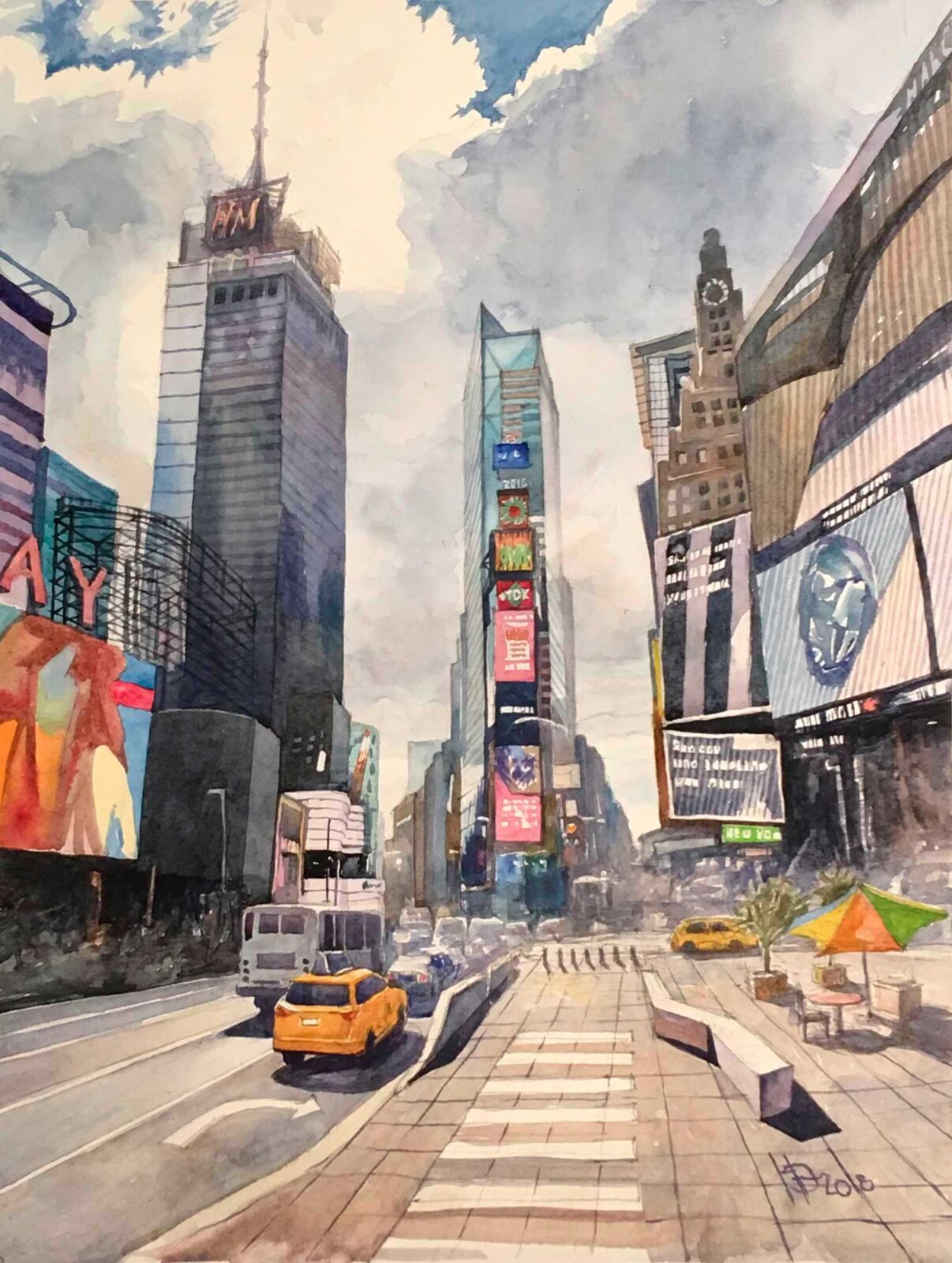
Finally, there is my anthropological stance. Being an anthropologist in Central Asia usually means studying one’s own culture because there is very little funding for studying cultures outside the region. Spending this entire year overseas has given me the opportunity to feel like a classical ethnographer: I submerge myself in a foreign culture, observing everything around me. The only major difference is the choice of medium for recording my observations: paintings instead of thick ethnographic accounts. In what follows, I would like to share some of my paintings, grouped into themes by location, with a little commentary.
Arlington
We live in Arlington, a small town to the west of Washington, DC, across the Potomac River, and I usually take a 20-minute bike ride via the Theodore Roosevelt Bridge to get to GW. Arlington is a very beautiful and safe town with a well-designed center, a variety of types of housing, and lots of greenery and parks. It also has hills, bike paths, and pedestrian overpasses over highways. I was once fascinated by the evening sky and painted it along with everything else that was in my view at the time: a 7-Eleven store, a burger place, and a four-lane highway. (A friend commented that these three objects represent suburban America very well.) Another thing that fascinates us is the elegance of simple houses. Even new houses are built in the traditional American style, with porches. This gives the place a sense of harmony and historical continuity. As outsiders, we buy into the image of the American dream: a house in the suburbs surrounded by tall trees, a car, a garage, a driveway, and a landscaped lawn. A different friend commented that the house is probably mortgaged, the car was likely purchased with a loan, and nobody knows what family life is like inside the house. Yet we still wanted to believe that the family living in that house was happy. Arlington is beautiful at different times of year: in autumn, it burns with reds, oranges, and yellows; in winter, it is very soft and gentle when clothed in fresh snow; and in spring, it is so romantic with cherry and magnolia blossoms.
Washington, DC
Washington, DC, is a classic example from urban design textbooks. Designed by Pierre L’Enfant, it has a rectangular grid of wide North-South and East-West streets cut through by diagonal avenues intersecting the grid at a number of famous circles and squares. The Washington Mall is the main spine of the heart of DC, with museums and memorials. The two buildings that most attracted my attention along the Mall were the Capitol (where Congress is located) and the National Smithsonian Institute. In one of the paintings, you can see Capitol Hill in the background, while at the front there is a food truck selling hotdogs. Dozens of such trucks bring the very formal atmosphere of the Mall area down to earth by offering a variety of cuisines and smells, as well as very loud hurdy-gurdy-like music. Another painting of the Capitol is called
“Government Shutdown.” It depicts the reflection of its Eastern façade in the polished surface of open space in front of it. The slightly uneven angle of individual reflecting surfaces produced the fragmentation of the facade, which to us was symbolic of the division and fragmentation of American society over bipartisan politics, while the upside-down reflection of the dome was symbolic of the longest government shutdown in American history—an experience that we still have a hard time comprehending. The historical 2-3-story residential neighborhoods of the Capitol Hill area and Georgetown are also some of our favorite places to walk around.
New York
One weekend in the fall, we took a Greyhound bus to New York to show our kids the Big Apple. My son, whose image of New York was mostly shaped by the Spiderman movie, was particularly excited. We got out of the bus station on 42nd Street and he was overwhelmed and somewhat disappointed; it was a bit too much for him to take: skyscrapers cluttered with images, noise, crowd, cars… In the first drawing, I tried to reflect his first experience. Later, as we went up to Central Park and down to the Ground Zero memorial, his perception of the city became more positive. My own childhood image of New York was partly shaped by the Willi Tokarev song “Neboskreby” (skyscrapers). In my paintings, I have tried to depict that fascination with the height of downtown buildings and the narrow deep canyons they create.
What we love about New York is its diversity. One of our favorite places there is Chinatown: it is so picturesque and we never miss an opportunity to eat in one of its many restaurants. The most tragic place is, of course, the Ground Zero memorial. Its comprehension is particularly important for me as a Muslim. When I painted the Ground Zero Mall, designed by Daniel Libeskind, whom I always admired when I was an architecture student, I debated whether I should paint it with more subtle colors, but eventually decided to use a bright palette to define the monument not so much as a mourning site for the lost lives as a celebration of the life that continues.
Pittsburgh, PA
I took a completely different approach when reflecting on the tragedy in Pittsburgh. We were there at the CESS conference on the tragic day that the local synagogue was attacked. My painting is called “Solitary Deserted House in Pittsburgh” and it reflects the sadness of a rainy day mourning for the innocent lives.

Princeton, NJ
Another CESS conference I attended was held at Princeton University in 2016. The university campus is extremely beautiful in the fall and I painted a series of very warm watercolors.
Small Urban Forms
Besides buildings and vistas, I am quite fascinated by street furniture—small urban forms that seem to have a life of their own. I fell in love with fire hydrants, which come in all kinds of shapes and colors. In one of the older DC neighborhoods, I came across a very old hydrant that seemed to no longer be functioning and was not cared for: layers of paint were peeling off it, it had an old chain, and it had been moved behind a fence. I called this painting “The Old Prisoner in Chains behind Bars.” Newspaper stands are also very colorful elements of American cities. They enliven street corners as they line up next to each other. My wife is particularly fond of streetlights, especially the classic older ones made from wrought iron.
The Great Falls Park
Located just outside of Arlington, this park sits along the Potomac River. We once spent an entire day hiking its trails and observing the beauty of the river, rocks, and pine trees.
U.S. Virgin Islands
For winter break, we were able to find cheap airline tickets to the U.S. Virgin Islands. We spent a few days traveling around St. Thomas, St. John, and Water Island. The beauty of their numerous bays and sunsets will stay in our memory for a very long time.
I acknowledge that my paintings depict only a very particular side of life in the United States: the one that is all rosy and pretty. We were lucky to have a scholarship, live in an upscale neighborhood and travel to tourist destinations and university campuses. But there is another side too—with poverty, homelessness, and decay. I have yet to learn more about it and to portray it in my paintings.
Exhibition
Last month, the Institute for European, Russian, and Eurasian Studies (IERES), at the Elliot School of International Affairs, George Washington University, organized my personal art exhibition titled “America through Kyrgyz Eyes: Art of a Visiting Scholar“. The opening was well-attended and I had a chance to talk about my artwork with colleagues and friends. I am grateful to the director of the Institute Pr. Peter Rollberg and director of Central Asia Program Pr. Marlene Laruelle for their support with the exhibition. Below are some images taken by Matthew Kewley, IERES Program Associate.
Lastly, I would like to mention that if anyone is interested in purchasing paintings, which are still available, it can be done at https://www.etsy.com/shop/UrbanscapesTreasures




